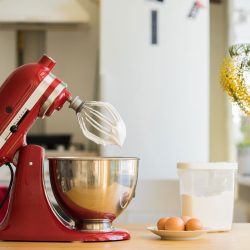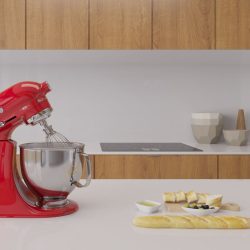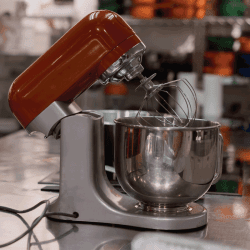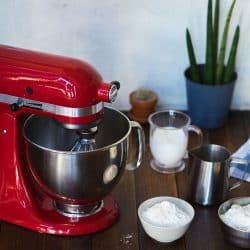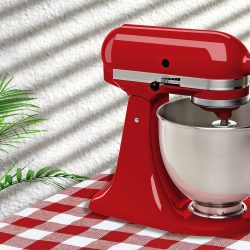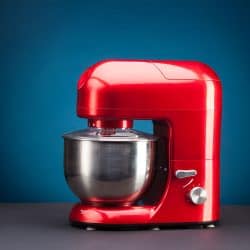If your Kitchenaid mixer head is wobbling and bouncing, it can't be used to its full potential. The other frustrating part is figuring out what's causing the problem. Let's take a look below.
If your Kitchenaid mixer head is wobbling and bouncing, it could be due to the following reasons:
- The beater blade is too high or too low.
- Loose neck pin.
- Bowl is not locked correctly.
- Worn out beater shaft bushings.
- Badly warped mixing bowl.
Each of these causes can be fixed with some troubleshooting. This article will look at each potential cause and how you can fix it. In addition, we will answer other frequently asked questions about the Kitchenaid mixer, so read on!

Why Is My Kitchenaid Mixer Head Wobbling?
If you like to cook or bake, you understand the importance of having a Kitchenaid mixer. This countertop mixer is a powerhouse that can knead bread dough, mix cake batter, and much more.
However, it can be highly frustrating if it isn't working correctly. One common problem is when the mixer's head starts to wobble and bounce around while mixing. This can make it challenging to use the mixer to its full potential.
You will find that it won't mix the ingredients as well as it should, and you might even end up with a mess on your countertop. So, what causes this problem? Let's take a look at some of the potential causes.
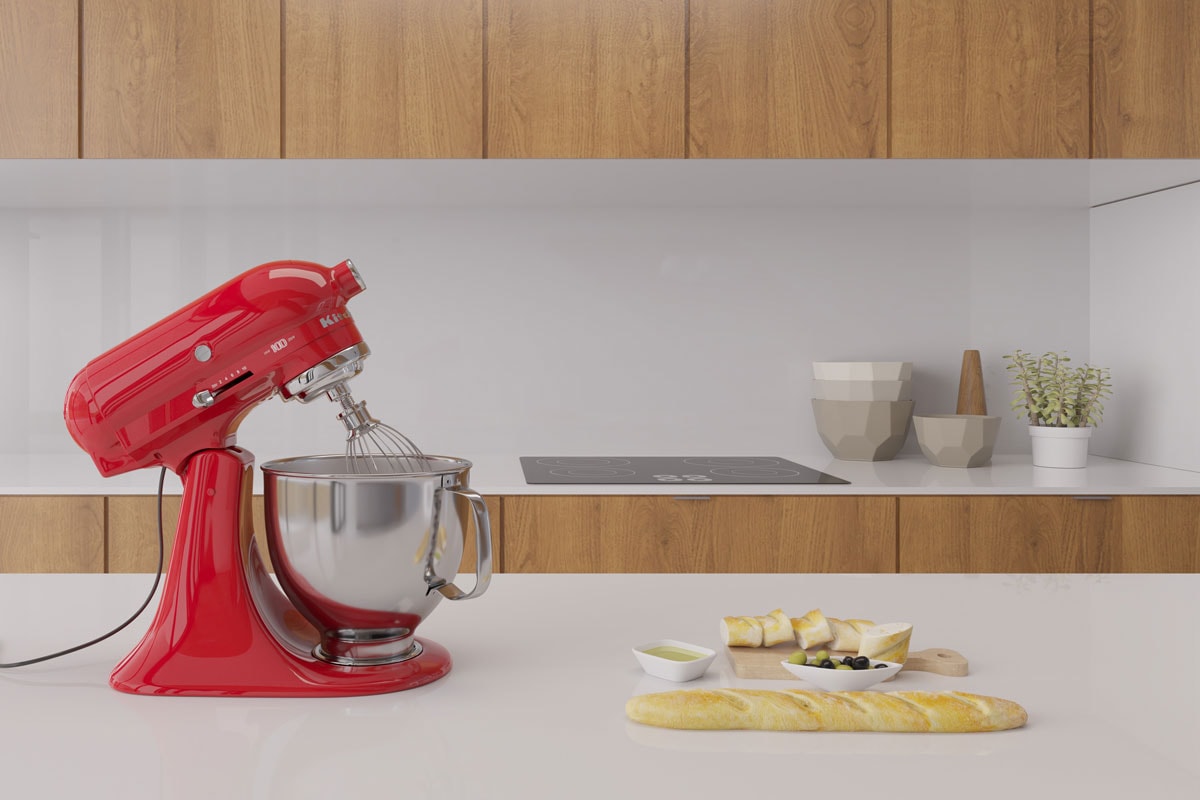
The Beater Blade is Too High or Too Low
One possible reason why your Kitchenaid mixer head is wobbling is that the beater blade is either too high or too low. If the blade is too high, it can hit the sides of the bowl and cause the mixer to vibrate.
On the other hand, if the blade is too low, it won't be able to mix the ingredients properly. This can also cause the mixer to vibrate.
To fix this problem, you will need to adjust the beater blade. You can do this by loosening the screw on the underside of the mixer and moving the blade up or down until it is at the correct height.
Loose Neck Pin
Another potential reason for a wobbling mixer head is a loose neck pin. Over time, the neck pin can become loose and cause the head to wobble.
If you notice the neck pin protruding out of the mixer, then this is most likely the problem. To fix this, you will need a flat head screwdriver.
Then put the mix on its side to access the screw holding the neck pin. Tighten the screw until it is snug. Be careful not to overtighten it, as this can strip the screw.
Bowl is Not Properly Locked
If the bowl isn't correctly locked, this can also cause the mixer's head to wobble. You will need to ensure that the bowl is locked in place before mixing.
To do this, push the bowl up until it clicks into place. You will know it is locked when you can't move the bowl up or down.
Worn Out Beater Shaft Bushings
Another potential cause of a wobbling mixer head is worn-out beater shaft bushings. Over time, the bushings can become worn out and cause the head to wobble.
To fix this problem, you will need to replace the bushings. You can remove the screw that holds the beater shaft in place and then pull out the old bushings.
Then, put the new bushings and screw the beater shaft back.
Badly Warped Mixing Bowl
If your mixing bowl is warped, this can also cause the mixer's head to wobble. A warped bowl can cause the head to bounce around while mixing, which makes it challenging to use the mixer properly.
You can replace the bowl by going to the Kitchenaid website and ordering a new one.
Do Kitchenaid Mixers Have a Lifetime Warranty?
Unfortunately, Kitchenaid does not have a lifetime warranty on its mixers. However, they offer a full one-year warranty on all of their products.
The warranty starts from the date of purchase and covers any defects in materials or workmanship. So, if your mixer breaks within the first year of ownership, you can get it replaced or repaired for free.
You can contact Kitchenaid's customer service department to begin the warranty process. When contacting customer service, be sure to have your proof of purchase and the serial number of your mixer handy.
You will also need to describe the problem you are having with your mixer.
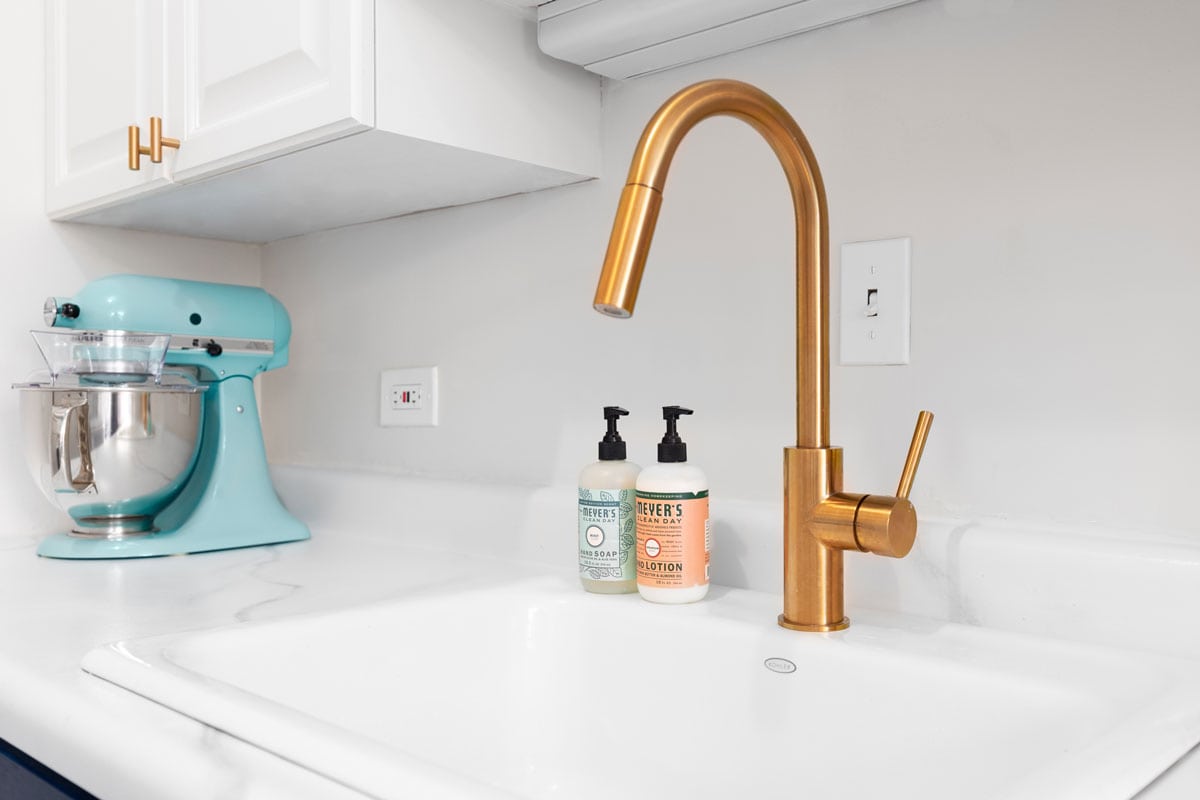
Do Kitchenaid Mixers Need To Be Oiled?
Yes, Kitchenaid mixers need to be oiled regularly. The frequency with which you will need to oil your mixer depends on how often you use it.
If you use your mixer frequently, you need to oil it every few months. However, if you use it occasionally, you can get away with oiling it once a year.
You can purchase Kitchenaid mixer oil from the Kitchenaid website or any other retailer selling Kitchenaid products.
When applying the oil, be sure only to use a small amount. Too much oil can cause the mixer to overheat and damage the motor.
Also, be sure to wipe off any excess oil after applying it.
How To Clean A Kitchenaid Mixer
Cleaning a Kitchenaid mixer is a relatively straightforward process. The first thing you will need to do is unplug the mixer from the outlet.
Then, remove the bowl and attachments from the mixer. Next, you will need to wipe down the outside of the mixer with a damp cloth.
Be sure to avoid getting water on the electrical components of the mixer. Once the outside is clean, you can move on to cleaning the bowl and attachments.
The bowl should be washed by hand in warm, soapy water. The stainless steel and coated attachments can be washed in the dishwasher.
However, the plastic attachments should only be cleaned by hand.
Once everything is clean, you can reassemble the mixer and plug it back in.
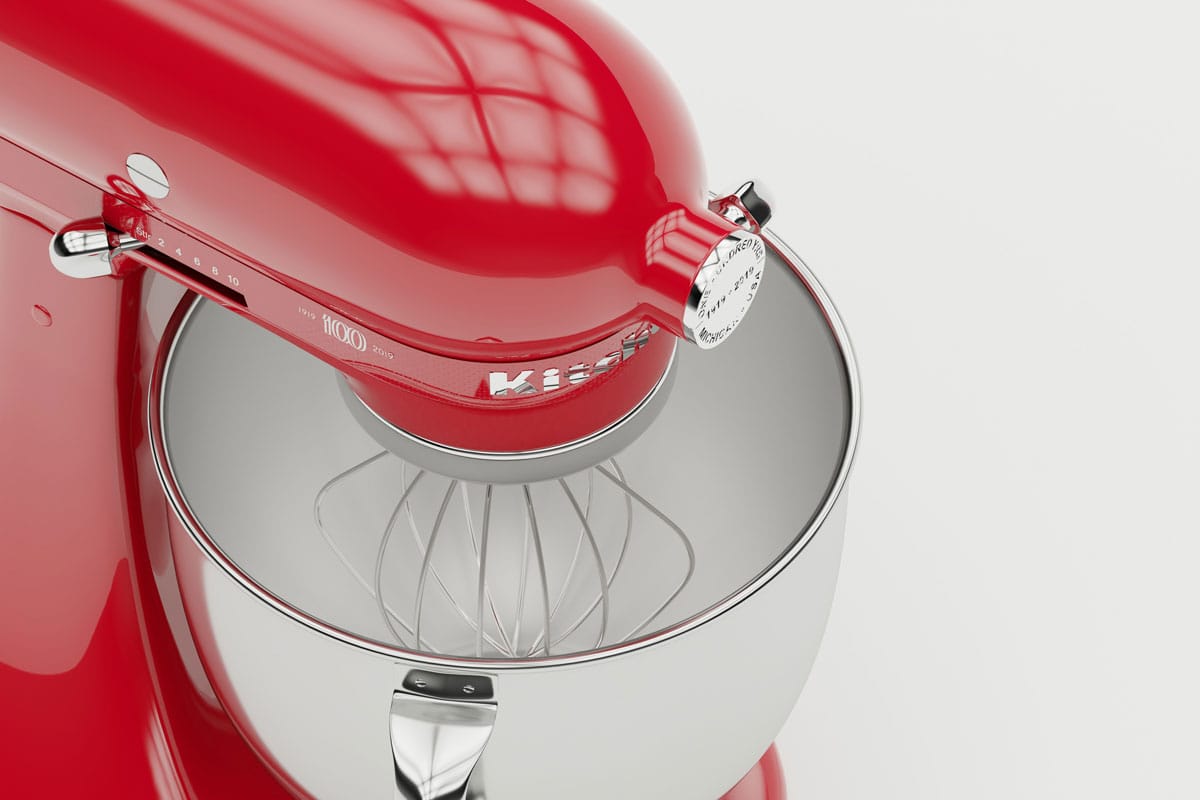
How Long Do Kitchenaid Mixers Last?
Depending on how often you use your mixer, a Kitchenaid mixer can last anywhere from five to fifteen years.
Of course, the more you use your mixer, the more quickly it will wear out.
That said, if you take good care of your mixer and oil it regularly, it should last for many years. In addition, tightening any loose parts and replacing worn-out parts will also help to extend the life of your mixer.
What Is The Kitchenaid Dime Test?
The Kitchenaid dime test is a great way to position your bowl on your mixer, so it doesn't wobble.
To do the dime test, place a dime in the center of your mixing bowl. Then, put the bowl on your mixer and turn it on to the lowest setting.
If the dime stays in place, then your beater is too high. If the dime moves around rapidly, then your beater is too low.
You will need to adjust the height of your beater until the dime swirls slowly around the bowl. This is a helpful hack for getting the perfect mixing consistency every time.
Can A Kitchenaid Mixer Be Stored On Its Side?
Ideally, a Kitchenaid mixer should be stored upright on your counter. However, they can take up a lot of space, so storing them at the waist to chest level on a shelf is also acceptable.
If you store the mixer too high or too low, you increase hurting yourself or dropping and breaking the mixer.
It can get damaged if you need to store your mixer on its side. Parts can loosen, or the mixer might not work properly when you use it again.
Why Is My Kitchenaid Mixer So Loud?
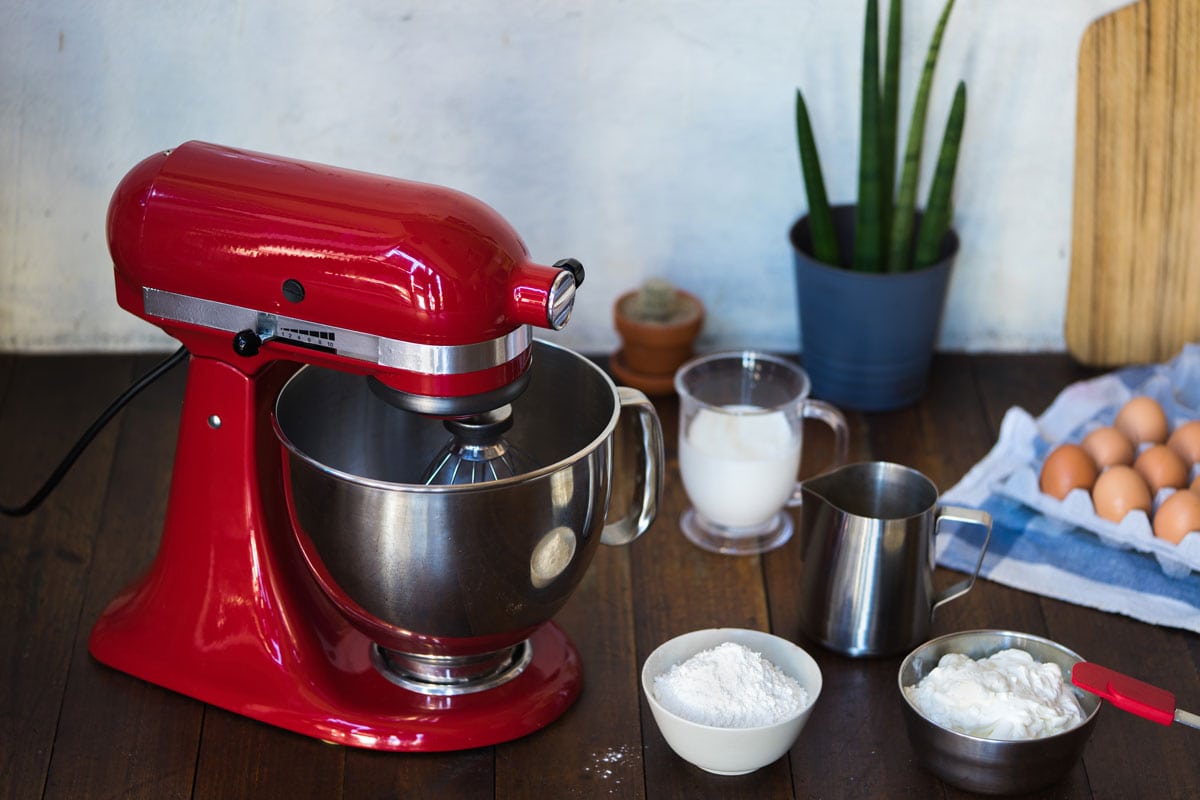
If you notice your Kitchenaid mixer is louder than usual, there might be something wrong with the motor.
First, check to make sure all of the parts are secured tightly. If they are, you will need to take it to a professional to check the motor out.
It's also possible that your mixer needs to be oiled. Be sure to oil your mixer regularly to keep it running smoothly.
If you have followed all these steps and your mixer is still loud, it might be time for a new one.
Final Thoughts
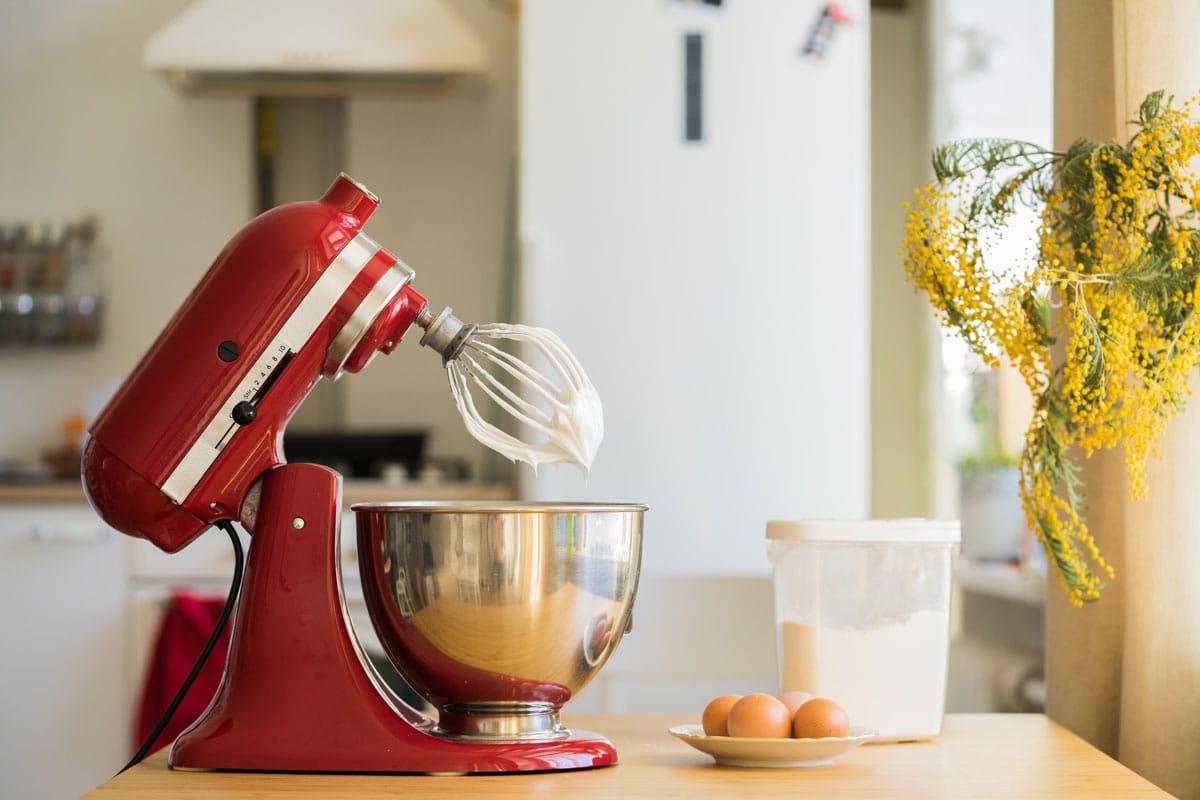
By following these tips, you can ensure your Kitchenaid mixer lasts for many years. Be sure to oil it regularly and clean it after each use.
If you notice any unusual noise or vibrations, take the mixer to a professional to have it checked out.
Made it to the end? Here are other articles you might enjoy:
Should My Kitchenaid Mixer Be This Loud?
Can I Use A Food Processor As A Mixer?
How Much Does A Cuisinart Mixer Weigh?

